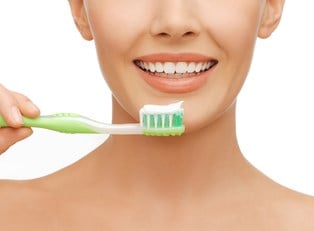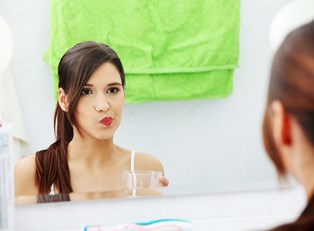All mouthwash is made up of a similar group of active ingredients, but knowing the upsides and downsides of active ingredients typically found in mouthwashes helps you weigh the different brands on the market. It should be noted that children under the age of 6 should not use mouthwash, as some ingredients can be harmful if swallowed.
Below is a close look at some key active ingredients standard in mouthwash mixtures. These include fluoride, antiseptics chlorhexidine digluconate and sodium lauryl sulfate, preservatives benzoic acid and sodium benzoate, and alcohol.
Fluoride
Many mouthwashes contain fluoride, an ingredient that prevents tooth decay and reduces your risk for cavities. The American Dental Association makes the distinction between cosmetic and therapeutic mouthwashes, saying that cosmetic mask bad breath without containing ingredients such as fluoride that are important for dental health. It's a good idea to talk with your dentist to determine if a therapeutic product containing fluoride is a wise health choice for you.
Chlorhexidine
Chlorhexidine may be a word you’ve never heard of, but this antiseptic is a basic component for mouthwashes. The ingredient chlorhexidine digluconate provides healing power, regenerating tissue and attacking bacteria. Just a tiny percentage added to mouthwash works well. It is a powerful active ingredient, and prolonged exposure through overuse can create dental issues such as membrane deterioration or stains.
Benzoic Acid
Benzoic acid is another common active ingredient found in mouthwash, and it works as a preservative. Mouthwash formulas tend to alternate between benzoic acid and sodium benzoate as preservative agents; benzoic acid has the benefit of being much more effective as an antibacterial agent. When choosing a mouthwash, the healthy choice is benzoic acid instead of sodium benzoate.
Alcohol
Alcohol is a common active ingredient in mouthwash, and perhaps the most controversial. Inconclusive research into links between oral cancer and mouthwash has convinced some to seek nonalcoholic mouthwashes, and some religious groups who abstain from any form of alcohol may look into alternatives as well. The ingredient can also worsen bad breath because it is a drying agent. Still, alcohol is commonly used to give mouthwash its “bite.” Alcohol gives the sense of transformation from dirty to clean and makes up as much as a quarter of the fluid in many mouthwashes.
Sodium Lauryl Sulfate
Much like alcohol, sodium lauryl sulfate (SLS) is an antiseptic active ingredient commonly by mouthwash manufacturers despite notable health issues. The main health issues associated with SLS is that if you are susceptible to ulcers, mouthwash containing SLS will likely lead to developing one.
Many toothpastes also use SLS as an active ingredient; this is problematic because using both mouthwash and toothpaste containing these ingredients can create a negative reaction that eliminates the benefits. It is recommended to wait at least one hour between brushing and using mouthwash if both of your products contain sodium lauryl sulfate.



